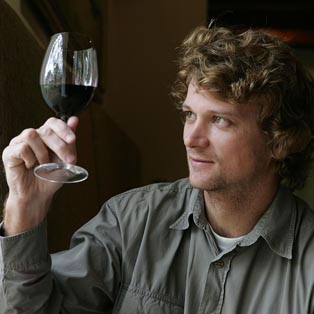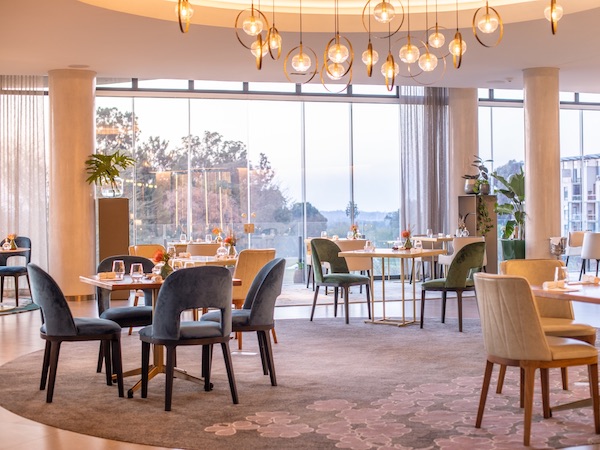News
Fine vine
Wednesday, March 23rd, 2011
Thinus Krüger is a busy man. Boschendal’s red-wine maker has spent the past few months hauling in tons of freshly harvested grapes, racking them into tanks, and watching sugar levels like a hawk. We caught up with him to get the scoop on this year’s harvest, finding balance in wine, and what he’d drink on his deathbed.
How did you start out?
I’m originally from Gauteng, but for some reason back at school I was interested in wine. After school, I studied wine-making at the University of Stellenbosch. In 2001 I started working at Bergkelder in Stellenbosch as an assistant. After five years, I took early retirement: I spent two years travelling. I did a little bit of work in a winery in Washington State in the USA, and then I worked at a distillery in La Mancha in Spain. It was fun seeing totally different sides of the wine industry. From there, I came to Boschendal.
You’re in the middle of the harvest at present; how is it going?
The harvest will finish quite a bit earlier this year. I think that’s due to a week or 10 days in January that were very warm – not warm actually – extremely hot! It hastened the ripening process; I harvested grapes last week that quite often I harvest in the first or second week of April.
I’m not complaining because it means I’ll be able to have an Easter weekend, only the second one in the past 11 years I think… So I’m quite happy with that!
Also, our crops were substantially less this year. We had the same number of bunches, the same number of berries on the bunch, but the berries weighed less. The skin was a little bit thicker, and the pulp was a little smaller, as a percentage of the total weight, which means we got a little bit less juice, and a little bit less tonnage.
How will that affect this year’s vintage?
It can cause the whites to be a little fuller, but we don’t only source our grapes from the farm; we buy from a number of places in Stellenbosch, Swartland and Elgin, so it’s difficult to say.
Are there any wine trends you’ve noticed in 2011?
We harvested four different vineyards of Shiraz quite early, a lot earlier than we would normally do, so they have between 12.5 and 13 percent alcohol. It’s not exactly a new trend, but we realised that a lot of vineyards in South Africa tend to have higher sugars, which translates to 14.5 or 15 percent alcohol, and those wines could tend to be a bit out of balance on the alcohol side and are not as readily accepted by some consumers. Also, in certain countries you pay more tax once the alcohol goes above 14 percent. There’s also a longevity issue: wines with lower alcohol levels tend to have lower pH and higher acids, which helps to improve the life of the wine. Lowering the alcohol from 14.5 to 13.5 percent is not something we can change overnight, stylistically the wines will differ substantially, but it is something we tried in 2011 and are quite happy with the results so far.
Tell us about your harvest process. What do you do on a typical day during harvest?
The process starts the evening or the week before: we visit all our vineyards with our viticulturist. We’ll taste the grapes, and try to make a call on when to harvest. Then we allocate space within the winery.
It must be exciting when everything is arriving!
Sometimes it’s more exciting than you’d wish it to be! Every morning, I check the temperatures and the sugars of all the grapes, just to make sure that the fermentations are still happy. I check them once or twice every day. With the new grapes, we let the juice settle for a day or two, to get all the solids out, because you want clean juice to ferment. I’ll rack those into tanks, add yeast, and get them fermenting. With the red wines, I’ll have to do pump-overs, to get colour and extraction out of the skin. Once they’re finished, we drain the tanks, jump in and shovel it out into a press. And then it starts all over again.
What’s your wine-making philosophy?
The most important thing is balance. A balanced vineyard produces balanced grapes. There should also be balance in the wine, between the structure, the colour and the acidity. You can’t ever make good wine from bad grapes, but you can make bad wine from good grapes. Unfortunately that is a lesson I learned the hard way. So you have to make sure, for instance, that the type of barrel suits the wine; if you’ve got a variety lighter in tannin and structure, you can’t use a lot of new oak on the wine, because it will dominate the profile of the wine. I’m a big fan of using second-fill barrels for my Shiraz; new barrels can be a bit overbearing on the wine.
If you could choose what to drink with your very last meal, what would it be?
You can’t have just one bottle if it’s going to be a last meal! I’d start with a good Fino sherry, very dry and ice cold. Then something like a Bâtard-Montrachet, a classy white wine. The red wine would be difficult… I think one of the big gutsy red wines from Ribera del Duero. It would definitely finish with a magnum of Champagne, Jacquesson or something like that. Somewhere in my last meal, I’d definitely have an unoaked South African Chenin Blanc. I’m a big fan of Chenin Blanc; I think it’s the greatest wine variety in the world! Internationally we have more of a reputation for Sauvignon Blanc, but whenever I travel abroad, I always try and get people to look at the Chenin Blancs.
For more on Boschendal, click here.
By Katharine Jacobs








